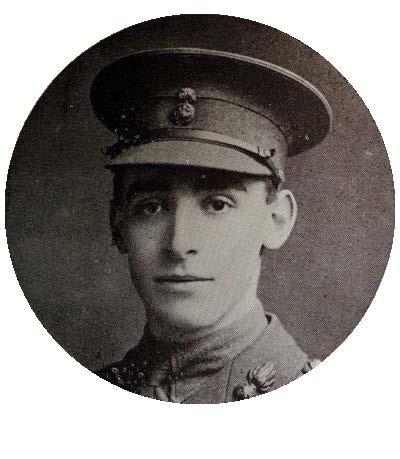
3 minute read
Wales and the Battle of the Somme
The Battle of the Somme has become synonymous with suffering, and the appalling British Army casualty figure of the first day of fighting on 1 July 1916 (57,470 casualties, including 19,240 fatalities). The fighting continued for five months with over 1,300,000 soldiers on both sides becoming casualties, and it is often portrayed as representing the futility of the First World War.
Twenty-seven Welsh battalions took part in this colossal undertaking, which was launched after months of meticulous planning, training and preparation. In addition to the men who served in the Welsh regiments, Welshmen also served in other regiments of the British Army and other branches of service. Welsh women also served in the Somme sector as nurses, drivers and as canteen staff. As a result, few towns and villages in Wales were unaffected by the terrible events of those five months. An unknown officer described the last moments of 2nd Lieutenant Alan Sheriff Roberts, age 20, an officer in the Royal Welsh Fusiliers. ‘We found under trees and bushes many a boy who had lost all hope of being found, and who had settled down in that desolate spot to die. In one corner, at the foot of a tree, we found Roberts. From his wounds I could see at once that we could do nothing for him. I got down, undid his collar, took off his cap and put my hand on his clear forehead. Feeling a touch, he opened his eyes, and recognising me smiled faintly, and murmured in a gentle voice, “Captain.” In a hopeless way I tried to do something for him, but he wanted nothing. He was in terrific pain, but he looked so mysteriously calm. The precious breath was getting fainter and fainter whilst his face became brighter and brighter, developing at the last a clearness that was well-nigh unearthly.’
Right: Second Lieutenant Alan Sheriff Roberts, Royal Welsh Fusiliers © Dr Jonathan Hicks
When the First World War ended many families took the opportunity to visit the battlefields where their loved ones died. A personal account from one Welsh family shows the devastation caused by this long battle. Second Lieutenant Adrian Barrett of the Royal Welsh Fusiliers was killed on 10 July 1916, aged just 20, leading his men in an attack on Mametz Wood, the largest wood on the Somme. In 1920 his mother visited the area where he died, and she later wrote this account:
‘At last, after months, even years, I have visited Mametz Wood. I have seen it in my dreams. I have thought of the spot and pictured it to myself – the place where my son was buried. I wanted to see the French Wood, the scenery last looked upon by the blue eyes of my boy. I have seen it all, and truly it is wonderful. Nature has done her best to soften the hard marks the war has made.’ The healing was to take longer for Helen Wheadon of Arabella Street in Cardiff. It was not until 1930 that she was notified that her son’s remains had been found and identified inside Mametz Wood. Private John Bryant Collins of the 15th Welsh had been reported missing on 11 July 1916. He was buried in Serre Road Cemetery and his mother at last knew exactly where her son lay. Stories from the Battle of the Somme are still being discovered, and the commemorative overnight vigil at Llandaff Cathedral on 30 June 2016 paid tribute to the sacrifice made by them all. Dr Jonathan Hicks
Above: Second Lieutenant Adrian Barrett, Royal Welsh Fusiliers © Dr Jonathan Hicks










